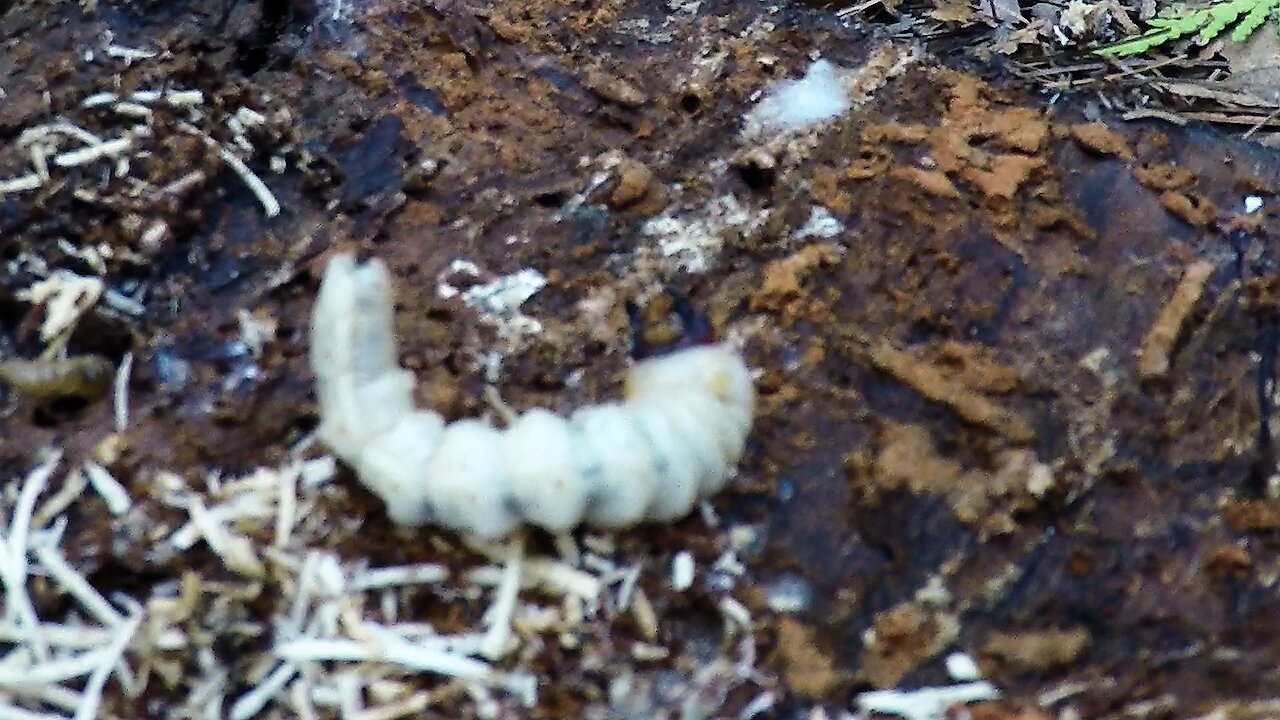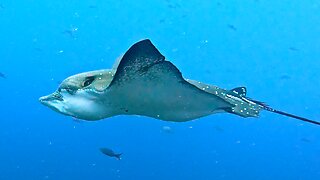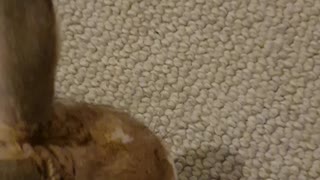Premium Only Content

Loud Crunching Sound Made By Monstrous Grub Hiding In Log
A cottager was standing beside a cut log and he was hearing a loud, crunching sound coming from somewhere. It sounded like a beaver or large animal grinding a set of big teeth on a piece of wood. But there was nothing to be seen. Eventually, he was able to track the sound to a cut log that lay on the ground in front of the cabin. Pulling back some bark, one single, monstrous white grub was found. It was approximately 3 inches long and it had enormous mandibles that it was using to cut and eat the wood under the tree bark.
Many grubs and insects are harmful to trees and it is wise to try to eradicate them. Ash borers are a good example. Invading species such as these can wreak havoc on a forest where they have an ample food supply and no natural predators. But most beetles and grubs are beneficial and do no harm. Such is the case here. It is the larvae of a large, Pine Sawyer beetle.
The Pine Sawyer lays eggs on decaying and unhealthy trees. They may have died, or they may have already been attacked and infested by other burrowing beetles and insects. The Pine Sawyer cuts a small groove in the bark and deposits several eggs. The eggs hatch and the larvae burrow into the tree, eating the soft wood that grows just under the bark. As they develop, the larvae burrow deeper into the tree, eating the heartwood. They form oval shaped tunnels leading deep into the tree.
As the larvae grow larger, they migrate back out to the bark and devour a huge amount of the outer layer of the tree again. They leave collections of debris and chewed wood that resemble the matted surface of a coconut husk. By this time they are so loud that they can actually be heard chewing under the bark, even from quite a distance away. These beetles rarely lay their eggs on healthy trees. By the time they are host to the Pine Sawyer, they are in a state of decline. The larvae perform a function that assists with decay and natural forest management.
Woodpeckers feast on grubs and insects that live in dying trees. They possess very acute hearing and they will perch on a tree to listen for the sound of the grub, like this one, eating beneath the bark. By locating the sound of the chewing, they are able to pinpoint the grub below the surface and hammer out a hole to get at them with their long tongues. This actually helps speed up the decay of dying trees as well. The holes will allow moisture to get into the tree and it will promote the growth of fungus. Insects are attracted to the holes and will lay even more eggs.
Trees are durable and long lasting, made of tough cellulose that does not quickly break down on its own. Nature compensates for this by employing the help of other organisms to speed up decay once a tree has died or become unhealthy. Pine Sawyer beetles are just one of many creatures that give nature a helping hand. Without them, dead trees would take much longer to fall and there would not be room for new and healthy trees to take their place.
Another bonus to the presence of the beetles is that they provide the incentive for woodpeckers to bore out large holes in trees that other animals then use as homes. Owls, squirrels, and many other creatures find shelter in the standing deadwood. The next time you see a repulsive looking grub, consider that its presence is often a very good thing for the forest and the animals who live there.
-
 1:34
1:34
WildCreatures
14 days ago $6.96 earnedMajestic Spotted Eagle Rays Fly Past Scuba Diver in the Galapagos Islands
25.7K9 -
 0:24
0:24
kateylou
3 years agoBunny crunching lettuce is the cutest sound
13 -
 2:27
2:27
ViralHog
6 years ago $0.13 earnedSnake Hiding by Dog's Water Dish
358 -
 14:12
14:12
BlabberingCollector
18 hours agoHBO Show Update, Audible Full Cast Ensemble Updates, Wizarding World Quick Hits!
11.3K1 -
 LIVE
LIVE
Lofi Girl
2 years agoSynthwave Radio 🌌 - beats to chill/game to
215 watching -
 31:30
31:30
The Why Files
7 days agoCodex Gigas | The Devil's Bible and the Nazi Hole to Hell
173K82 -
 1:05:26
1:05:26
Man in America
18 hours ago“Poseidon” Doomsday Sub, Microplastics & The War on Testosterone w/ Kim Bright
96.5K8 -
 1:05:57
1:05:57
Sarah Westall
11 hours agoThe Story the DOJ, the FBI and the Media doesn’t want you to Know w/ Christina Bobb
47.9K11 -
 2:16:01
2:16:01
IsaiahLCarter
1 day ago $17.90 earnedGraham Linehan: A Mess of Courage and Conviction || APOSTATE RADIO 034
34.6K -
 2:03:29
2:03:29
Tundra Tactical
12 hours ago $16.99 earned🛑LIVE NOW!! Honest Gun Company Slogans Gun Mad Libs and Much More
39.1K2